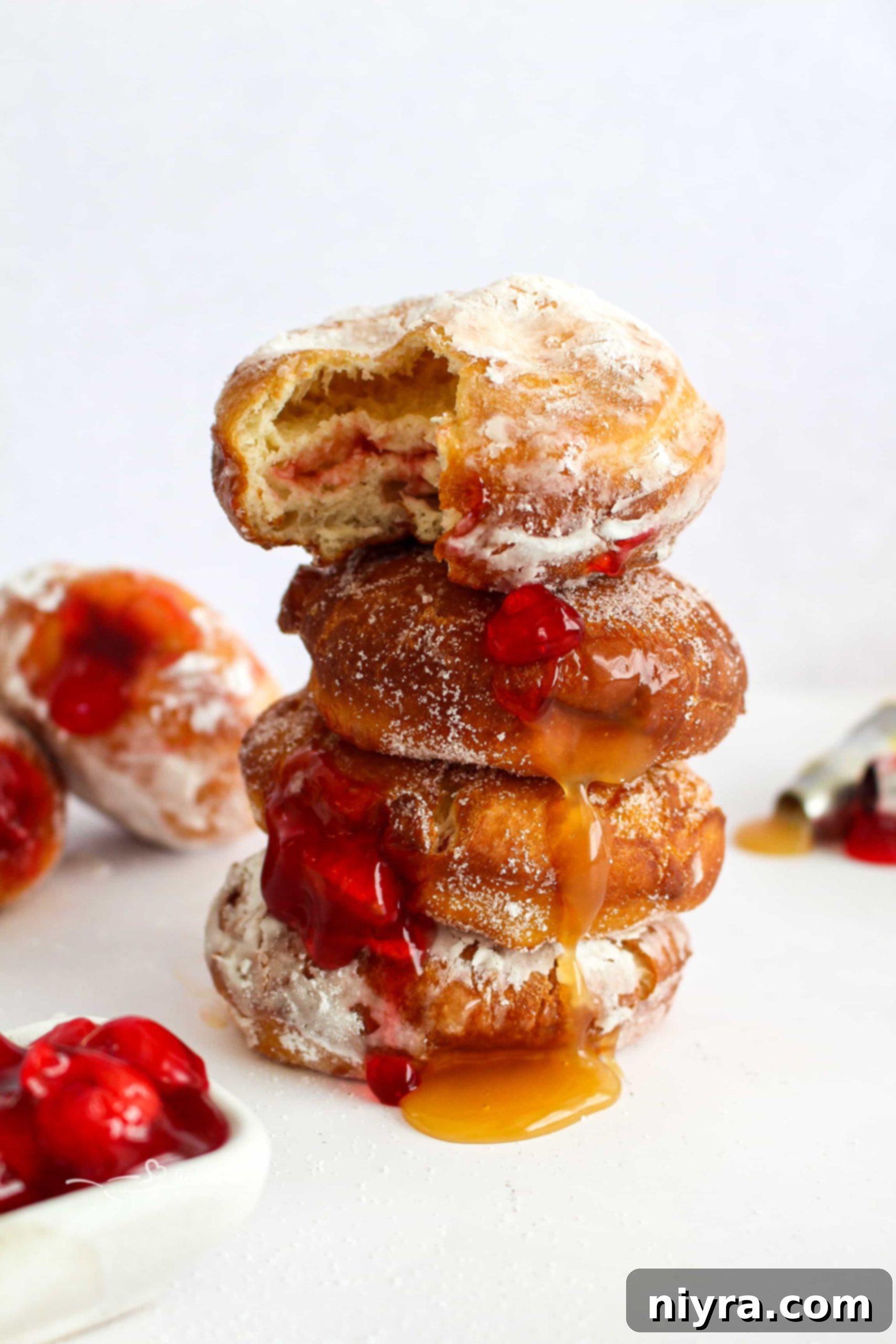Welcome to the ultimate guide to traditional Polish Paczki, the irresistible deep-fried delights that are a highlight of Fat Tuesday and the entire Mardi Gras season! These tender, butter-enriched doughnuts, bursting with sweet fillings, are more than just a pastry; they’re a cherished cultural tradition. One bite of these pillowy, jam-filled pączki, and you’ll immediately understand why they’re worth every moment of effort to create.
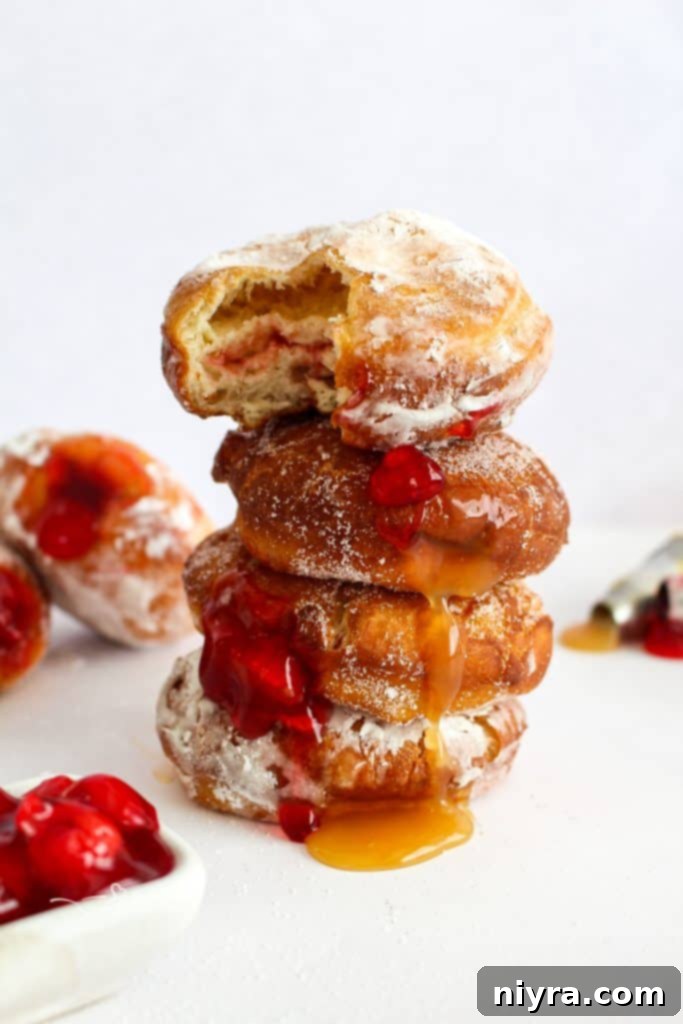
As a proud Polish girl, sharing the scrumptious tradition of Pączki holds a special place in my heart. My journey into making these delectable treats began in 2020 when I received an old Polish cookbook as a gift. Flipping through its well-loved pages, I marked numerous recipes I longed to try, but it was these authentic Polish donuts that first captivated my attention. The idea of baking a piece of my heritage was truly inspiring.
Instead of searching for “Paczki near me” and hoping to find an authentic bakery, I decided to embark on the rewarding adventure of making them from scratch. What an incredible discovery it was! From that moment on, this recipe has become a beloved staple in our home, bringing joy and a taste of tradition to every celebration.
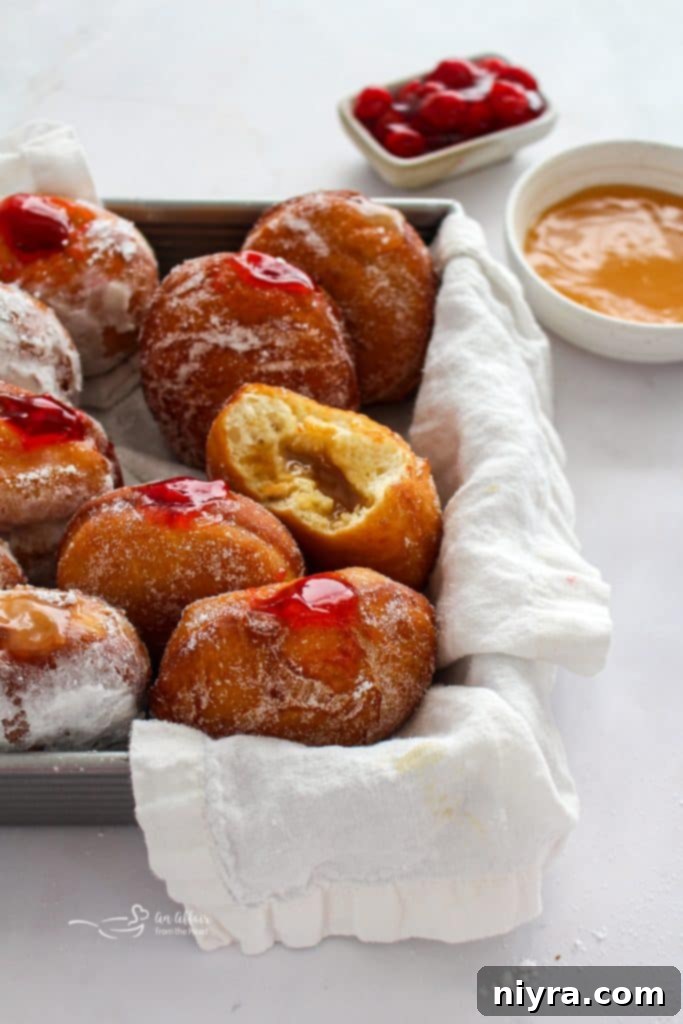
Discovering Paczki: A Polish Culinary Gem
Paczki (pronounced “POONCH-key”) are much more than just a dessert; they are a centuries-old culinary tradition deeply embedded in Polish culture, tracing their origins back to the Middle Ages. Unlike the lighter, fluffier American-style donuts, pączki are distinguished by their exceptionally rich, dense, and tender yeast dough. This luxurious texture is achieved by incorporating a generous amount of eggs, butter, and often a touch of spirits (like rum or brandy), which also helps prevent excessive oil absorption during frying. These deep-fried masterpieces are then generously filled with an array of sweet delights, ranging from classic stewed plum jam and tangy raspberry preserves to creamy custards and delicate lemon curds. A final flourish of powdered sugar or a delicate sweet glaze completes these golden-brown treats, making them an unforgettable experience.
If you’ve fallen in love with these traditional Polish donuts, you’re sure to enjoy exploring more of my delicious donut recipes. Consider trying my Baked Glazed Lemon Donuts for a bright, citrusy treat, or indulge in the rich decadence of Double Chocolate Baked Donuts. For something truly unique, don’t miss the intriguing Chocolate Kraut Doughnuts, and for a quick and easy option, my Air Fryer Biscuit Donuts are a perfect choice.
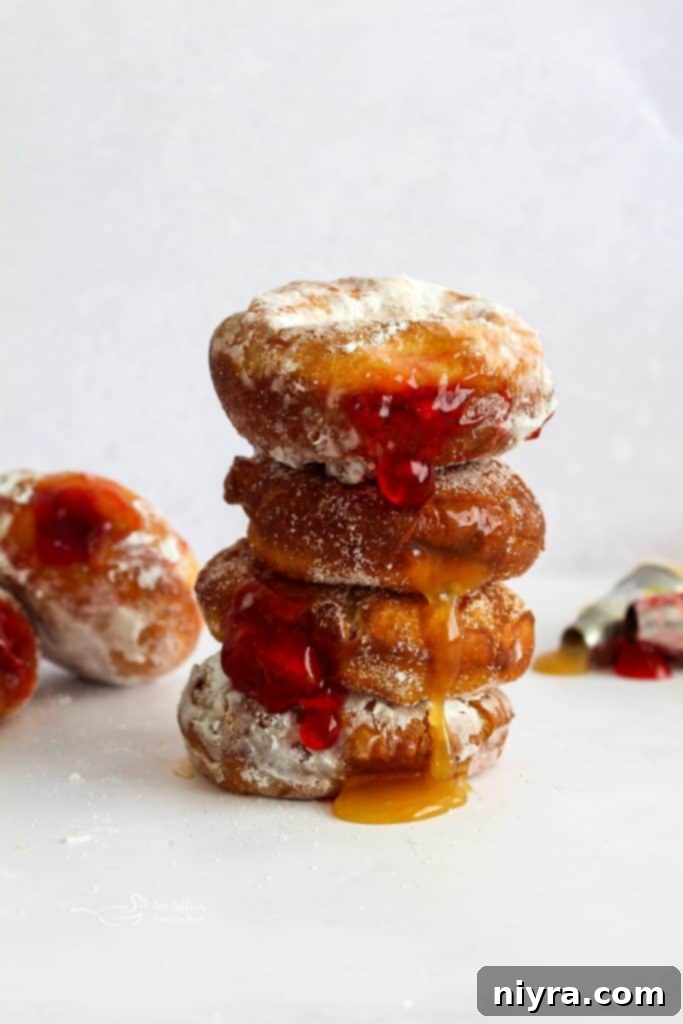
Pronouncing “Paczki”: A Quick Guide
One of the most common questions surrounding these delightful Polish doughnuts is how to correctly pronounce their name. The plural form, Pączki, is pronounced “POONCH-key.” If you’re referring to a single doughnut, it’s a pączek, pronounced “POON-check.” Mastering this pronunciation is a small but important step in appreciating the cultural authenticity of this special treat. You’ll hear this word frequently, especially around Fat Tuesday and Mardi Gras, particularly in regions with vibrant Polish communities where “Paczki Day” is a deeply cherished and widely celebrated event.
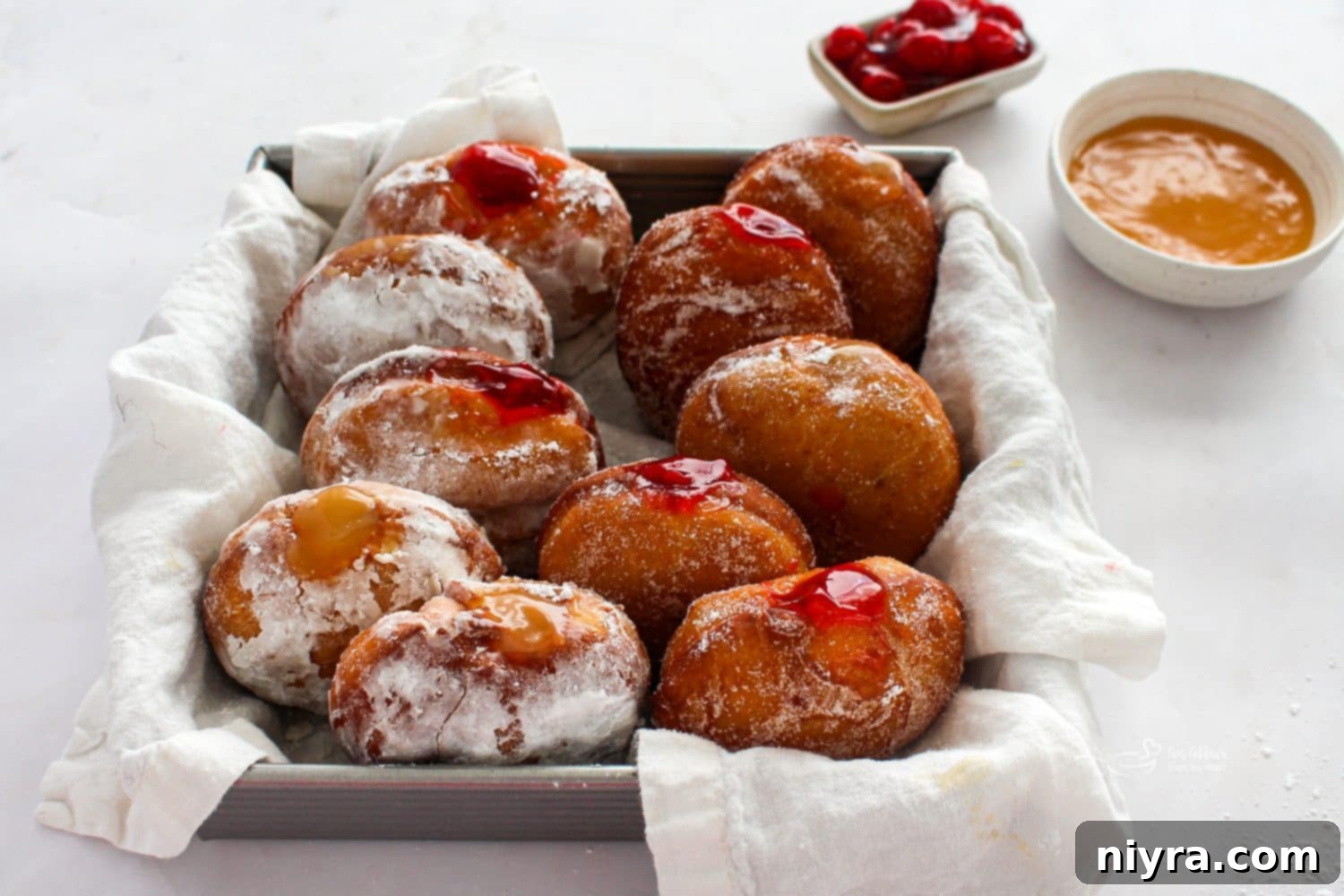
Paczki vs. Donuts: Understanding the Rich Distinction
While pączki might visually resemble the familiar American jelly doughnuts, there are fundamental differences that elevate them into their own special category. The most significant distinction lies in the dough itself. Traditional paczki dough is remarkably richer, containing a higher proportion of egg yolks and butter than typical donuts. This luxurious ingredient profile results in a denser, more substantial, and brioche-like texture that is both tender and incredibly satisfying. Historically, pączki were also fried in lard, imparting a unique depth of flavor, although modern recipes often opt for vegetable oil for convenience.
In contrast to the lighter, often airier American jelly donuts (sometimes known as Bismarcks), authentic pączki boast a heartier bite and less internal air, making them feel more substantial. Furthermore, the filling in a true pączek is famously generous—a truly good pączek should be absolutely bursting with its sweet core! This inherent richness and generosity weren’t just for indulgence; they were by design. Pączki were traditionally made as a practical way to use up all the rich ingredients like eggs, sugar, and lard in the household before the lean fasting period of Lent began. This historical purpose imbues each pączek with a deeper cultural significance, making it a delicious precursor to spiritual reflection.
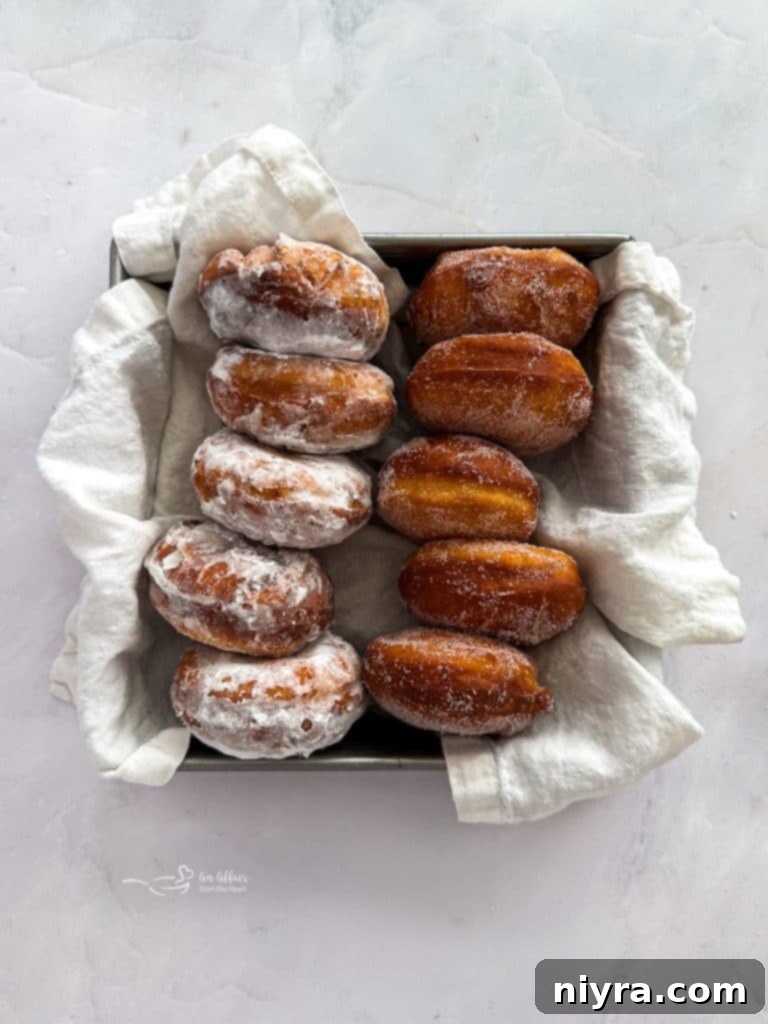
When is Paczki Eaten? Understanding the Tradition
The timing of when pączki are enjoyed is deeply rooted in religious tradition and pre-Lenten celebrations. In Poland, pączki are most famously consumed on Tłusty Czwartek, or Fat Thursday, which is the last Thursday before Ash Wednesday. This day marks the joyous beginning of the final week of festivities leading up to the fasting period of Lent. It’s a day of exuberant indulgence, where Poles traditionally eat copious amounts of pączki to prepare for the upcoming solemnity.
In the United States, however, these beloved Polish donuts are more commonly associated with Fat Tuesday (also known as Shrove Tuesday or, more colloquially, Pączki Day), the day immediately preceding Ash Wednesday. This variation in timing doesn’t diminish their significance; rather, it reflects the adaptation of traditions within Polish-American communities. The underlying purpose remains the same: to use up rich ingredients like eggs, sugar, and lard before the start of Lent, embracing a final period of feasting and enjoyment. Today, the demand for pączki is immense, with Polish bakeries and grocery stores across the United States, particularly in cities with large Polish-American populations like Chicago and Detroit, selling thousands upon thousands of these delicious treats in the days leading up to Lent, turning “Paczki Day” into a widespread, eagerly anticipated event.
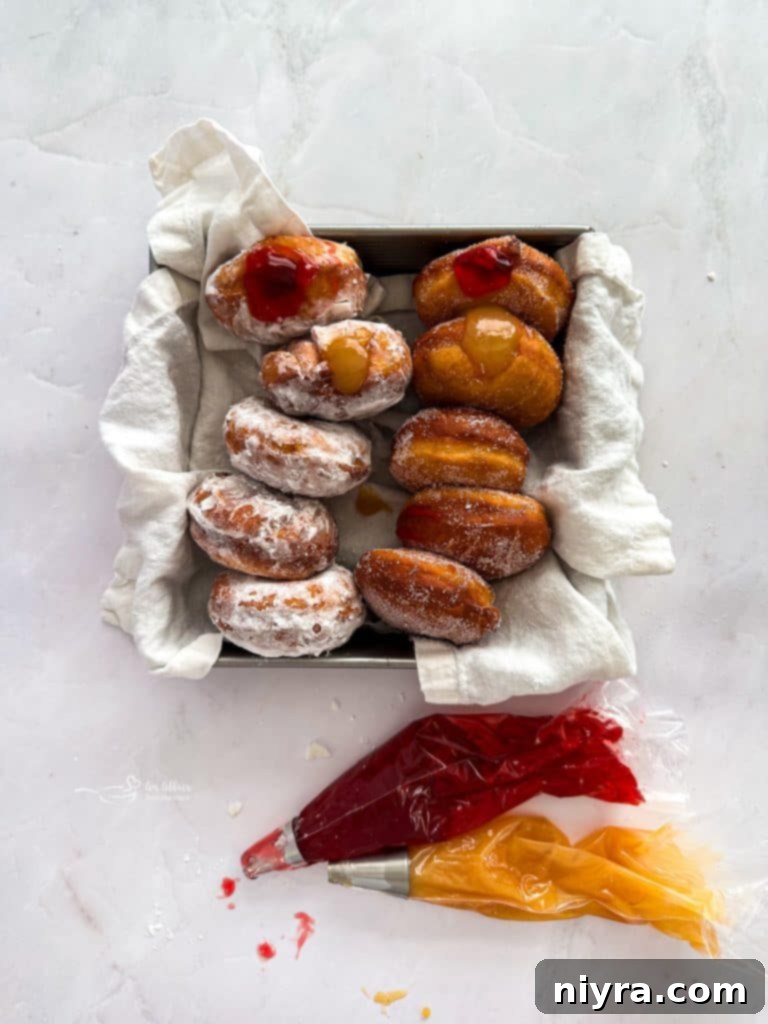
Delicious Fillings for Your Paczki
While the rich dough is a star, the fillings are what truly complete the pączki experience. Traditional pączki fillings are deeply rooted in Polish culinary history, featuring classics like rose hip jam, rich prune butter (known as powidła), and sweet stewed plum jam. However, modern interpretations have broadened the spectrum, offering an array of exciting possibilities. Here are some of the most popular and delightful fillings you might want to try:
- Raspberry Jam: A vibrant and tangy modern favorite, offering a bright contrast to the rich dough.
- Custard Filling: Creamy, smooth, and delicately sweet, providing a luxurious mouthfeel.
- Lemon Curd: Zesty and tart, this filling adds a refreshing burst of citrus flavor.
- Bavarian Cream: A rich, vanilla-infused cream that’s wonderfully smooth and indulgent.
- Strawberry Preserves: Sweet and fruity, with delightful chunks of real strawberries.
- Apple Butter: Spiced and subtly sweet, evoking comforting autumn flavors.
- Blueberry Preserves: A burst of juicy blueberry flavor, perfect for a vibrant twist.
- Sweet Cheese (Twaróg): A traditional Polish farmer’s cheese filling, often sweetened and flavored with vanilla or lemon, offering a unique texture and savory-sweet profile.
The wonderful aspect of making your pączki from scratch is the freedom to customize them. Feel free to experiment with your favorite fruit preserves, creams, or even chocolate fillings to create a truly personalized batch that everyone will adore!
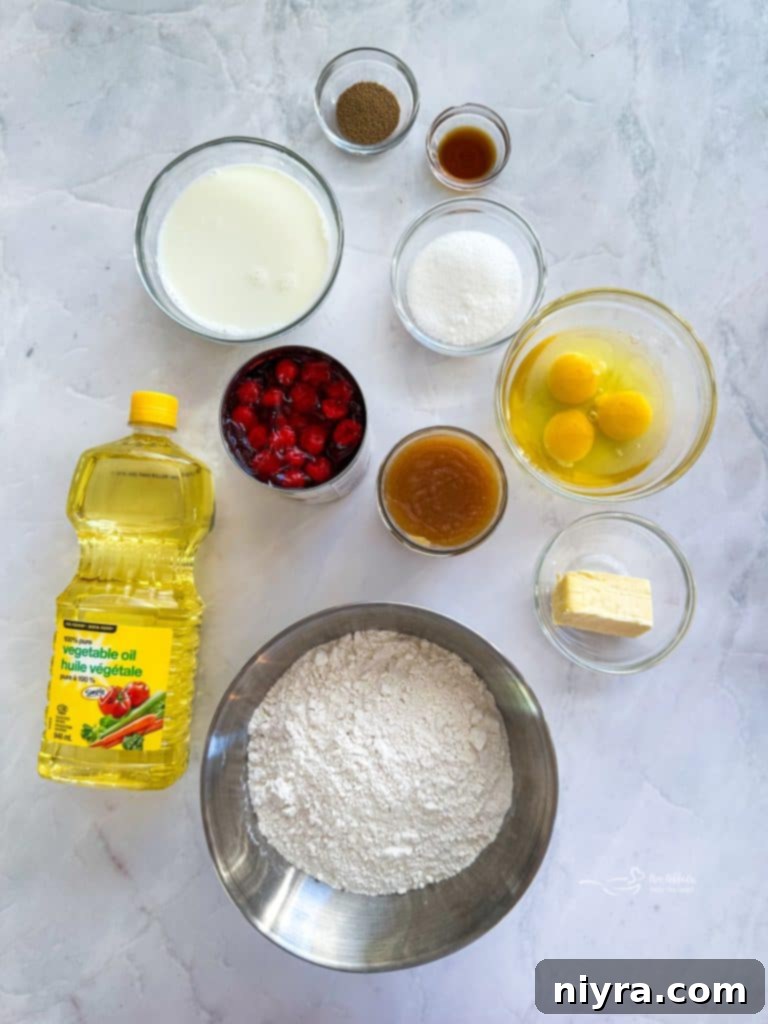
Essential Ingredients for Perfect Pączki
Crafting these traditional Polish donuts requires a careful selection of ingredients, each playing a crucial role in achieving that distinctive rich flavor and tender texture. For the complete list of ingredients and detailed instructions, please scroll to the bottom of this post for the full printable recipe card.
- Scalded Milk: Heating milk to just before boiling then cooling it helps to deactivate proteins that can inhibit yeast activity, creating an optimal environment for the yeast to thrive and contributing to the pączki’s signature tender crumb.
- Butter: Unsalted butter at room temperature is essential. It adds richness, flavor, and contributes to the dough’s softness and elasticity.
- Sugar: Granulated sugar provides the perfect level of sweetness to the dough, balancing the richness of the butter and eggs and aiding in the browning process during frying.
- Vanilla Extract: A touch of vanilla extract adds a warm, aromatic depth that beautifully complements the sweet fillings and overall flavor profile of the pączki.
- Active Dry Yeast: This is the leavening agent that makes the dough rise, creating the characteristic fluffy, yet substantial, texture of authentic pączki. Ensure your yeast is fresh and active for the best results.
- Eggs: Large eggs, brought to room temperature, are vital. They enrich the dough, add moisture, and contribute to the beautiful golden color and fine texture of the finished donuts.
- All-Purpose Flour: The structural foundation of our pączki dough. The exact amount may need slight adjustment depending on humidity and how well your dough comes together.
- Vegetable Oil: Used for deep frying. You can easily substitute this with canola oil or peanut oil, both of which have high smoke points suitable for frying.
- Filling Options: Whether you choose classic jam, a creamy custard, or zesty lemon curd, the filling is where the pączki truly shines. Have your preferred choice ready!
- Sugar Coating: A final dusting of either granulated sugar or fine confectioners’ sugar adds an extra layer of sweetness and a pleasant textural contrast to the warm pączki.
Before diving into the full recipe, continue reading for valuable tips and tricks, potential substitutions, and answers to common questions you might have about making this delicious Paczki Polish Donut Recipe a success in your kitchen.
How to Make Authentic Paczki Polish Doughnuts
Making pączki from scratch is a labor of love that requires a little time and patience, but I promise you, the incredible results are undeniably worth every moment of effort! The process is broken down into easy-to-follow steps to ensure your success.
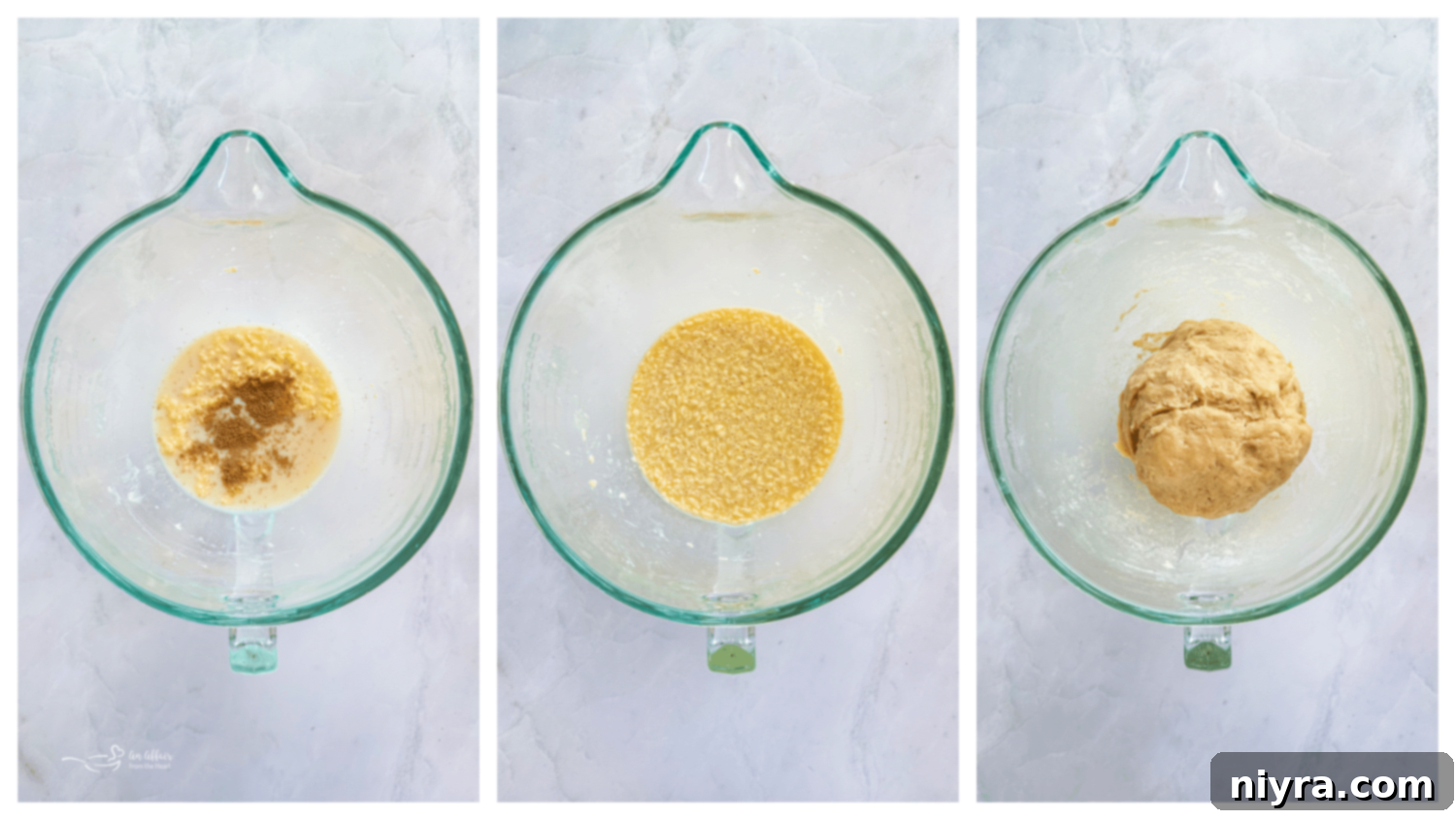
Begin by carefully scalding your milk in a saucepan over medium heat until tiny bubbles just start to form around the edges. This process, heating the milk to about 180°F (82°C), helps to enrich the dough and create a favorable environment for the yeast. Once scalded, immediately remove the milk from the heat and allow it to cool down to a lukewarm temperature of 110°F (43°C). In the spacious bowl of your stand mixer, combine the cooled milk with the softened butter, granulated sugar, and fragrant vanilla extract. Using the whisk attachment, mix these ingredients until the sugar has fully dissolved and the butter is smoothly incorporated into the liquid base. Then, gently sprinkle in a package of active dry yeast and mix again until it has completely dissolved, blooming slightly.
Next, use a spatula to scrape down the sides of the bowl, ensuring all ingredients are well-combined. Add the large eggs, one at a time, mixing thoroughly after each addition until fully incorporated. This gradual addition ensures the eggs emulsify properly into the rich dough mixture.
Remove the whisk attachment and secure the dough hook to your stand mixer. With the mixer set to a low speed (typically speed 2), begin slowly adding the all-purpose flour to the wet mixture, a little at a time. It’s crucial to add the flour gradually, observing the dough’s consistency. You may not need all of the suggested flour, or you might require a tiny bit more, depending on environmental humidity and flour absorption. Continue mixing until the dough comes together into a smooth, elastic ball that pulls away from the sides of the bowl.
Once your dough is perfectly kneaded, remove it from the mixer and lightly spray the bowl with a non-stick cooking spray. Return the dough ball to the bowl, then lightly spray the top of the dough with cooking spray to prevent it from drying out. Cover the bowl securely with a clean kitchen towel and place it in a warm, draft-free spot to rise for approximately 1 hour. During this time, the dough should noticeably double in size, indicating the yeast is active and working its magic. A warm oven (turned off, with just the pilot light or a brief preheat) or a sunny spot in your kitchen are ideal places for this crucial first rise.
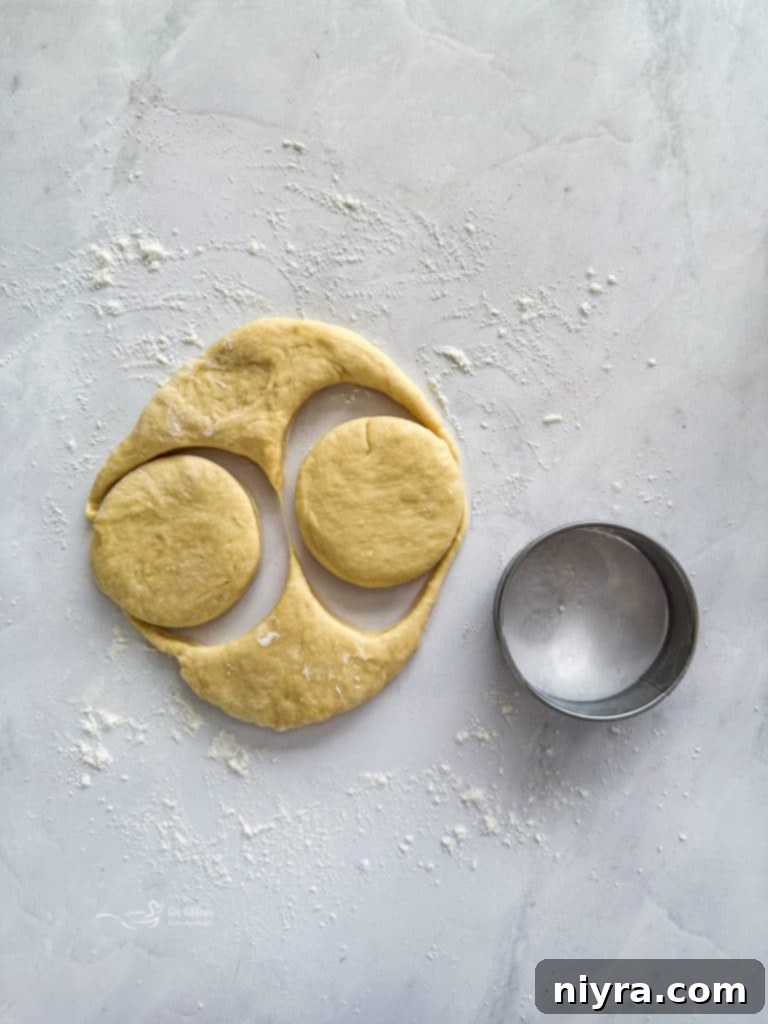
After the dough has beautifully risen and doubled in size, gently punch it down to release the air. Transfer portions of the dough onto a lightly floured surface. Using a rolling pin, carefully roll the dough out to an even thickness of about 1/2-inch to 3/4-inch. The consistency is important for achieving the right texture in your fried pączki. Take a 3-inch biscuit cutter or a drinking glass of a similar diameter and use it to cut out individual dough circles. Continue gathering and re-rolling the dough scraps until all the dough has been cut into rounds.
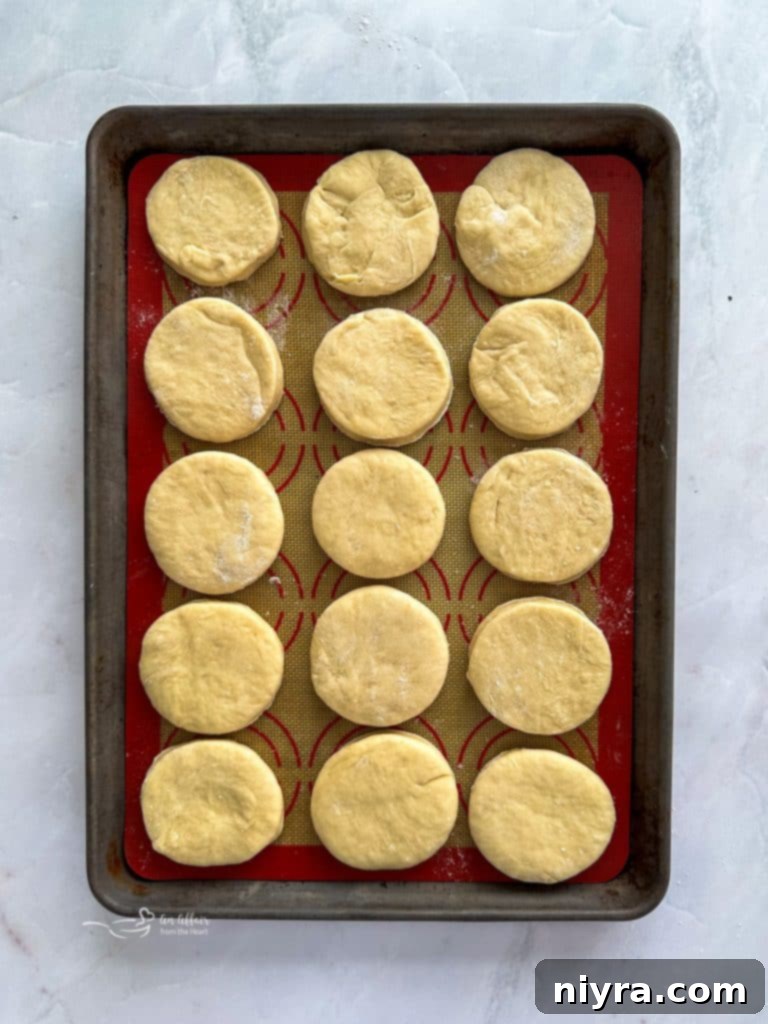
Carefully transfer these delicate dough rounds to a baking sheet lined with parchment paper, leaving a little space between each one to allow for further expansion. Lightly cover the sheet with a clean kitchen towel and let the cut dough rounds rise again for another 30 minutes in a warm, draft-free place. This second rise, known as proofing, is crucial for developing their light, airy internal structure and ensuring they fry up perfectly.
While the pączki are undergoing their final rise, prepare your frying station. Fill a sturdy cast iron Dutch oven or a deep, heavy-bottomed pot with about 3 inches of vegetable oil (or your chosen frying oil). Gather your desired sugar coating, whether it’s granulated sugar or confectioners’ sugar, and set it aside in a shallow dish. Prepare your chosen filling by placing it into a piping bag fitted with a long, thin tip, ready for easy injection. Finally, line a large bowl with several layers of paper towels to absorb excess oil from the freshly fried pączki.
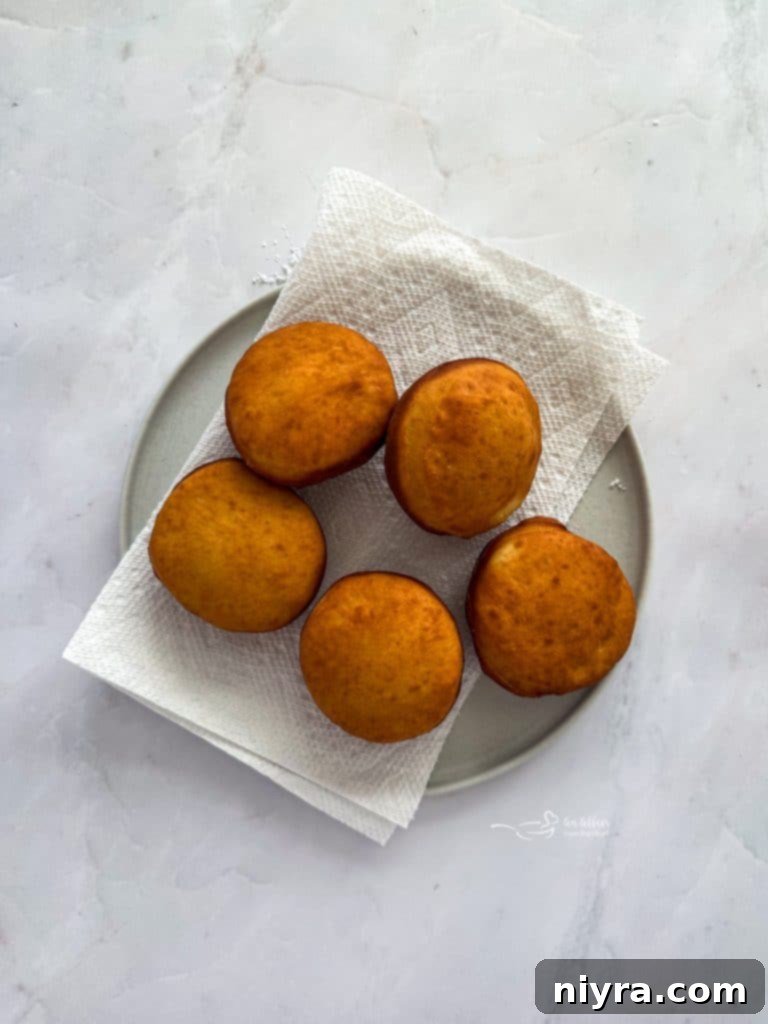
Heat the oil to a steady 350°F (175°C). Using a deep-fry thermometer is highly recommended to maintain this precise temperature, as it’s critical for evenly cooked and non-greasy pączki. Carefully add about 3-4 dough rounds to the hot oil at a time, ensuring not to overcrowd the pot, which can lower the oil temperature. Always place the top side (the drier side from rising) into the oil first. Watch them closely! Once they turn a beautiful golden brown on the bottom, carefully flip them over using a flat-slotted spoon or tongs. Continue frying until they are golden brown on both sides. Remove the perfectly fried pączki from the oil, allowing any excess oil to drain back into the pot, and immediately transfer them to the paper towel-lined bowl.
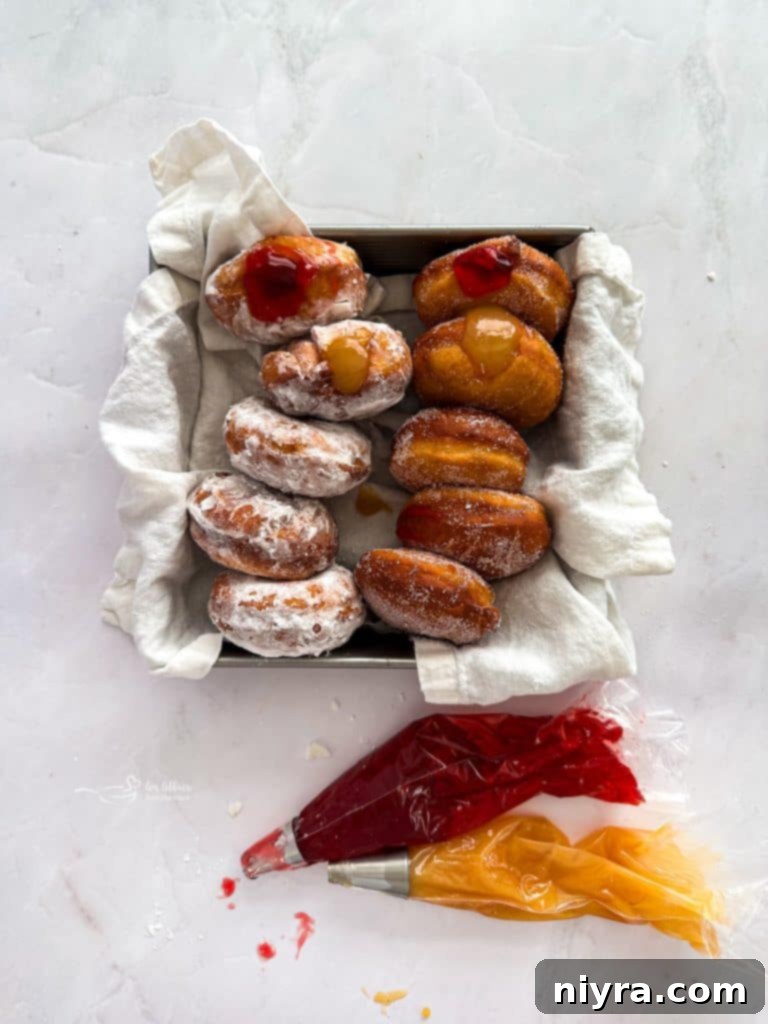
While the pączki are still warm but cool enough to handle, roll them generously in your chosen sugar coating. The residual heat will help the sugar adhere perfectly, creating a delightful sugary crust. For filling, carefully poke a small hole into the side of each pączek using a sharp knife or a wooden skewer. Insert the piping bag tip into the hole and gently squeeze to fill the pączek with your desired jam or custard until it feels plump and generous.
These exquisite Polish donuts are truly at their best when enjoyed fresh and warm on the very day they are made. If you happen to have any leftovers, store them loosely covered in an airtight container at room temperature for up to 3 days. Avoid wrapping them too tightly, as this can cause the sugar coating to become damp and sticky. For longer storage, pączki freeze exceptionally well. Wrap them tightly in plastic wrap and then place them in an airtight freezer-safe container or bag, where they can be stored for up to 3 months. To enjoy, simply thaw them on the counter for about 30 minutes, and they’ll be almost as good as fresh!

Love This Recipe? Pin It for Later!
If you’re as enchanted by this Traditional Polish Donut Recipe as I am, don’t let it get lost! Make sure to save it to your favorite Pinterest recipe board so you can easily find it whenever you’re ready to bake or simply need a dose of inspiration for your next sweet craving. Happy pinning!

Frequently Asked Questions About Paczki
- What is the difference between a donut and a pączki? Pączki stand apart from standard donuts primarily due to their richer dough. They incorporate significantly more eggs, egg yolks, butter, and often sugar, resulting in a denser, more brioche-like texture compared to the typically lighter, airier American donut. Pączki are also almost always filled, a characteristic not universally true for all American donuts.
- What’s the difference between a pączki and a jelly donut? While both are beloved for their sweet fillings, the core difference lies in the dough. Pączki are made with a much richer dough, laden with extra eggs and butter, which gives them a distinctively denser, more substantial, and luxurious texture. In contrast, most American jelly donuts tend to be lighter and more airy.
- What is the difference between Pączki and Bismarck? Bismarcks, also known as Berliners, are German-style filled doughnuts. They share a close resemblance to pączki in their filled nature, but generally, Bismarcks feature a slightly lighter dough with fewer eggs and less butter than the traditional Polish pączki, making them less rich but still delicious.
- When is Paczki Day? The celebration of pączki varies slightly by region. In Poland, pączki are traditionally devoured on Fat Thursday (Tłusty Czwartek), which falls on the last Thursday before Lent begins. In the United States, however, Pączki Day is most commonly observed on Fat Tuesday (also called Shrove Tuesday), the day directly preceding Ash Wednesday and the start of Lent. Both days serve as a final indulgence before the Lenten fast.
Top Tips & Tricks for Perfect Paczki
Achieving bakery-quality pączki at home is entirely possible with a few key techniques. Here are my best tips and tricks to guide you:
- Properly Scald and Cool Milk: To scald milk effectively, heat it in a small saucepan over medium heat until small bubbles just begin to form around the edges, indicating it has reached approximately 180°F (82°C). Immediately remove it from the heat to prevent scorching. Crucially, allow it to cool to precisely 110°F (43°C) before adding yeast, as too-hot milk will kill the yeast, and too-cold milk won’t activate it.
- Ensure Optimal Dough Rise: The secret to light and fluffy pączki lies in a good rise. Always use fresh, active dry yeast. For the best proofing, place your dough in a warm, draft-free spot. A turned-off oven with the light on, or a warm spot on top of your refrigerator, can provide the ideal environment.
- Crucial Oil Temperature Management: Maintaining the correct oil temperature is paramount for perfect pączki. Use a candy thermometer or deep-fry thermometer to keep your frying oil at a consistent 350°F (175°C). If the oil is too cold, the pączki will absorb too much oil and become greasy; if it’s too hot, they will brown too quickly on the outside and remain raw inside.
- Prevent Oil Absorption: Avoid overcrowding the frying pan. Frying too many pączki at once will drastically lower the oil temperature, leading to greasy, dense donuts. Fry in small batches to maintain consistent oil temperature and ensure even cooking.
- Effortless Filling Technique: For a clean and generous filling, use a wooden skewer, the back of a thin spoon, or a small sharp knife to create a pilot hole in the side of the cooled pączek. Then, use a piping bag fitted with a long, thin tip (like a Bismark tip) to inject your chosen filling deeply and generously into the center.
- Roll in Sugar While Warm: Don’t wait too long after frying! The residual heat from the freshly fried pączki is essential for the sugar coating to adhere perfectly, creating that classic sparkly exterior. Roll them in granulated or confectioners’ sugar as soon as they are cool enough to handle.

More Delicious Recipes to Love
These Paczki Polish Donuts are an absolutely fantastic way to celebrate Fat Tuesday, but the festive fun doesn’t have to stop there! My King Cake Donuts (pictured above) offer another delightful and colorful option for Mardi Gras celebrations, capturing the spirit of New Orleans in a bite-sized treat. I have a wide array of donut recipes here on my site, each offering a unique flavor and baking adventure. Be sure to explore my fluffy Powdered Sugar Donuts, the comforting Baked Banana Donuts, spiced Glazed Pumpkin Donuts, the refreshing Cherry Limeade Baked Donuts, and the decadent Baked Chocolate Covered Strawberry Donuts before you go. There’s a donut for every craving!
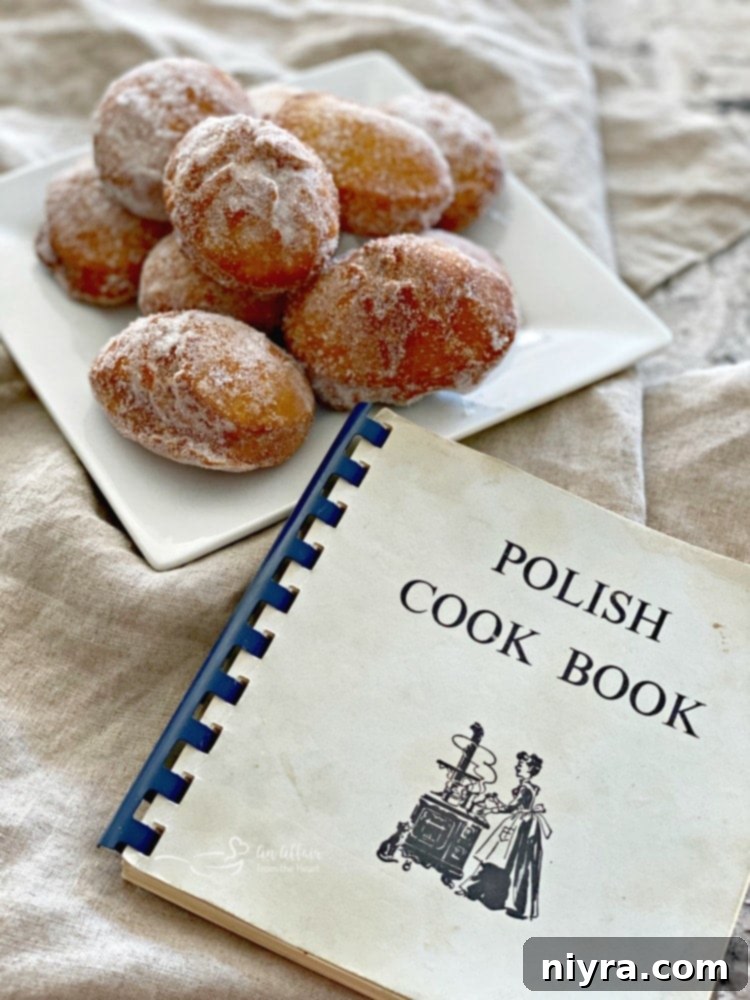
Exploring More Traditional Polish Recipes
My culinary journey with pączki truly began thanks to a treasured gift: an old Polish cookbook from the 1970s. This invaluable collection of recipes, lovingly compiled by one woman’s daughters, is nothing short of a culinary goldmine. It was within its pages that I discovered this authentic Polish Pączki recipe, passed down through generations. The book isn’t just a collection of ingredients and instructions; it’s a testament to the enduring flavors and cooking traditions of Polish families.
If you’ve enjoyed this Pączki recipe and are eager to delve deeper into the rich and hearty world of Polish cuisine, passed down through the generations in our family, then here are some other traditional recipes you absolutely must try:
- Kapusniak (Sauerkraut Soup): A robust and flavorful soup, perfect for warming up on a cold day.
- Smoked Polish Sausage with Sauerkraut: A classic, comforting dish combining savory sausage with tangy sauerkraut.
- Polish Noodles – Kluski Kapusta Kiszona (Polish Haluski): Hearty noodles with cabbage and bacon, a true Polish comfort food staple.

Celebrate Mardi Gras with Homemade Paczki!
There is truly nothing quite as satisfying and heartwarming as biting into a warm, freshly made pączek on Fat Tuesday. These traditional Polish Donuts offer the perfect, indulgent send-off before the solemn period of Lent begins. With their unparalleled rich dough and an array of sweet, bursting fillings, homemade pączki bring an authentic taste of Polish tradition directly to your Mardi Gras celebrations. Imagine the joy of serving these golden delights alongside festive king cakes, creating a truly unforgettable spread that your family and friends will reminisce about until the next celebratory season arrives. Embrace the tradition, savor the flavor, and make this Fat Tuesday extraordinary with your very own homemade pączki!

LIKE THIS RECIPE?
Don’t forget to give it a ⭐️⭐️⭐️⭐️⭐️ star rating and
leave a comment below the recipe!

⭐️
⭐️
⭐️
⭐️
Print Recipe
Pączki – Polish Donuts
Equipment
- Lodge 6 Quart Enameled Cast Iron Dutch Oven. Classic Red Enamel Dutch Oven (Island Spice Red)
- Thermapen Mk4 Instant-read Thermometer
Ingredients
- 1 cup scalded milk cooled to a lukewarm temperature of 110 degrees F.
- 1/4 cup butter room temperature
- 1/4 cup sugar
- 1/2 teaspoon vanilla
- 1 package active dry yeast
- 3 large eggs room temperature
- 4 cups all-purpose flour may need a little more or less
- Vegetable Oil for frying
- Jam custard, lemon curd for filling
- Sugar or confectioners’ sugar for rolling
Instructions
- In a saucepan, scald milk, then cool it to 110 degrees F. In the bowl of your stand mixer, add milk, butter, sugar, and vanilla. Using the whisk, mix until sugar is dissolved, and butter is incorporated. Add a package of active dry yeast and mix again until dissolved.
- Scrape down the sides of the bowl and add each egg, one at a time, mixing in each one at a time.
- Attach the dough hook to your mixer. Turn the mixer to low speed (speed 2) and slowly add the flour to the milk mixture a little at a time. You may not need all of the flour, and you may need a bit more. Mix until dough is smooth.
- Remove the dough ball, spray the bowl with non-stick cooking spray, add the dough back in, spray the top of it with non-stick spray. Cover the bowl with a clean towel and let rise in a warm, draft-free place for 1 hour. It will double in size. (I place mine in a warm oven)
- When the dough has risen, grabbing parts of it at a time, place on a lightly floured surface and roll out to about 1/2″-3/4″ thick. Using a biscuit cutter or glass that is about 3″ in diameter cut circles. Continue rolling until the dough is all cut. Transfer the rounds to a cookie sheet lined with parchment paper.
- Cover lightly with a clean towel, and let rise for another 30 minutes.
- Fill a cast iron Dutch oven with about 3″ of oil. Gather your sugar, and place your desired filling in a piping bag. Line a large bowl with paper towels.
- Heat oil to 350 degrees F. Add about 3-4 rounds to the hot oil, top side (dry side) in first. Watch closely and flip when they are golden brown. I used a flat slotted spoon. Remove them when they are golden on both sides, and place in the bowl lined with paper towels.
- When donuts are still warm, but able to be handled, roll them in sugar. Poke a hole in the side with a sharp knife and fill with jam using a piping bag.
- They are best eaten when warm the first day. Can be stored in an airtight container for up to 3 days.
Notes
Nutrition

This recipe was originally posted on February 21, 2020. It has been updated to improve user experience and reshared on February 20, 2025.
